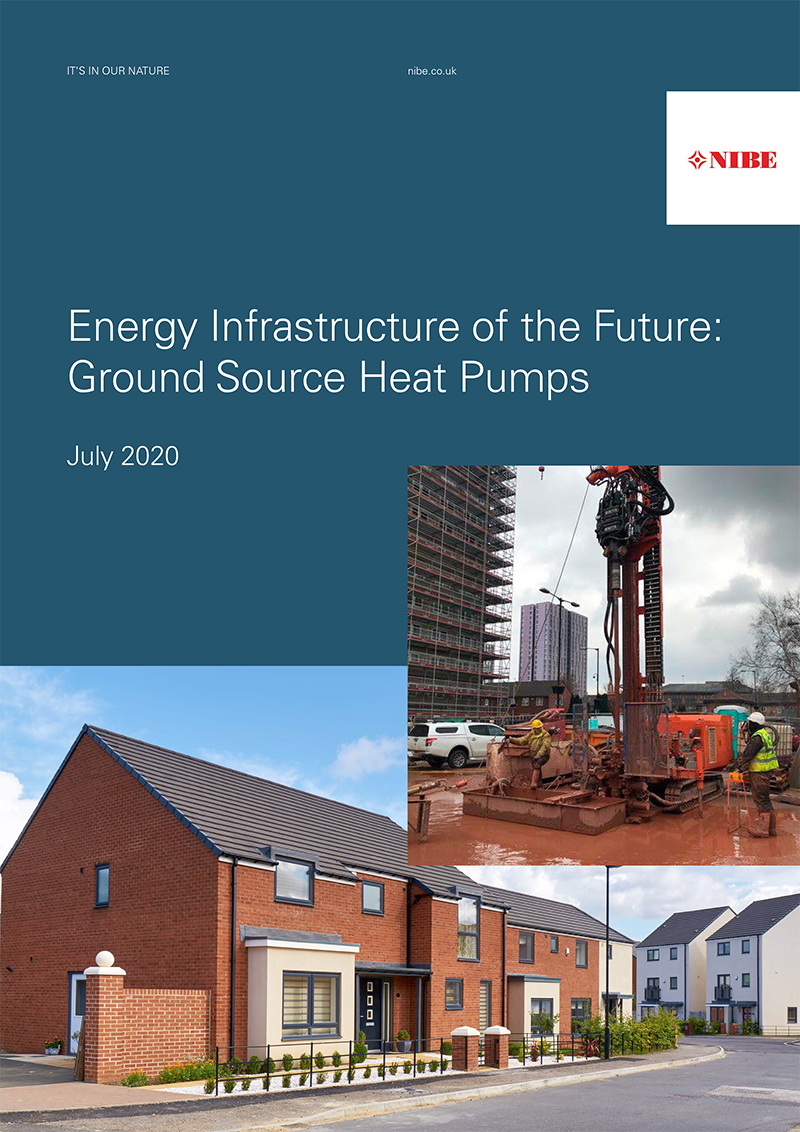
NIBE Energy Systems has published a new policy paper which includes a scheme to support the installation of Ground Source Heat Pump infrastructure to enable greater uptake in the UK. It has been shared with BEIS and industry representatives.
The paper proposes a radical new policy solution to fund 100 years of GSHP infrastructure. This would help finance the ground works for GSHPs, making their cost comparable to gas boilers through a fee paid regularly by the household. This will pay back the initial capex for the ground works and create warmer, low-carbon new build homes, generating benefits for all parties.
GSHPs work by extracting warmth from underground by pumping water through a network of large pipes buried in a property’s garden, via boreholes that can reach several kilometres. They represent a stable method of heating and cooling all year round and are as effective in summer as they are in winter. The ability to install a renewable heating system without the requirement for additional space is an attraction for developers with space at a premium on new build sites. The technology offers a space-saving solution ideal for large developments, but significant deployment is being held back by higher costs.
The recently announced Clean Heat Grant was welcomed by the heat pump sector. However, concerns have been raised about the predicted uptake and the suitability of the flat £4,000 grant for GSHPs. It is the cost of the groundworks which makes GSHPs more expensive than their air source counterparts but both technologies have a role to play in delivering the net zero aspirations. Just 11,000 GSHPs were installed under the Renewable Heat Incentive (RHI) in March 2020 compared to over 46,000 air source heat pumps, despite applications for domestic RHI reaching a four-year high. Mechanisms to support deployment must be tailored to ensure that all homes and business are able to access low carbon heating.
Conducting the ground works necessary for GSHPs is very cost-effective when servicing multiple homes at one time. This is because the machinery that is used to drill the boreholes, known as rigs, can simply be moved between properties in the same development at a very low cost. If homes are serviced on an individual basis instead, the cost associated with the borehole drilling can be a substantial proportion of the overall cost.
NIBE believes that the groundworks needed for GSHPs should be seen as a long-term infrastructure investment and policy should be designed to encourage deployment. Incentivising energy infrastructure investments such as boreholes should help to deliver increased uptake of this low-carbon technology.
To read the policy paper in full, click the image below…














